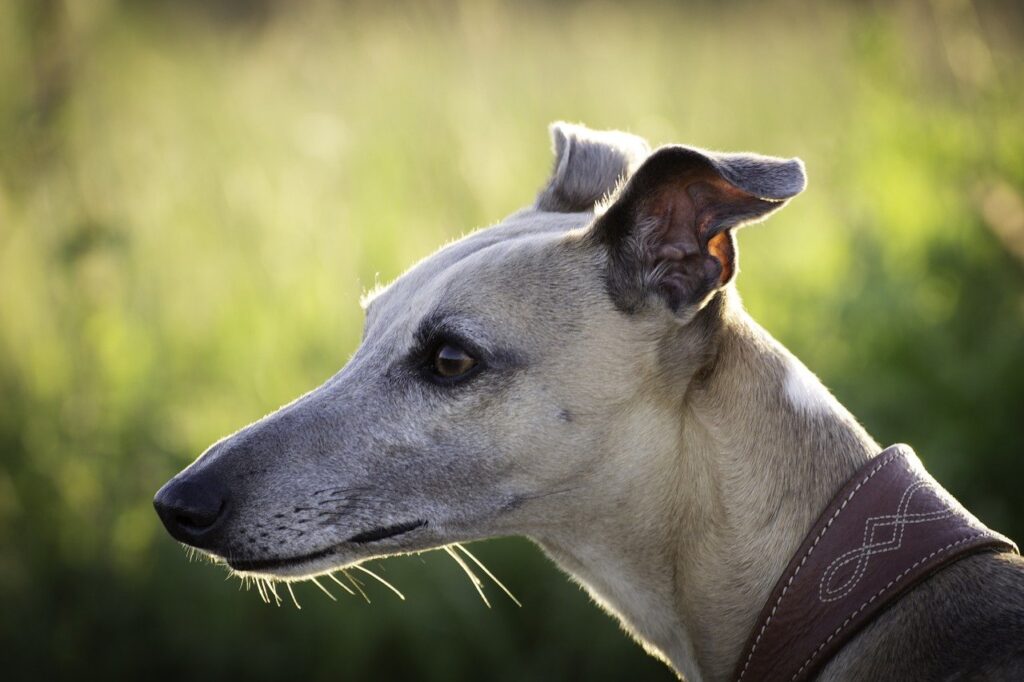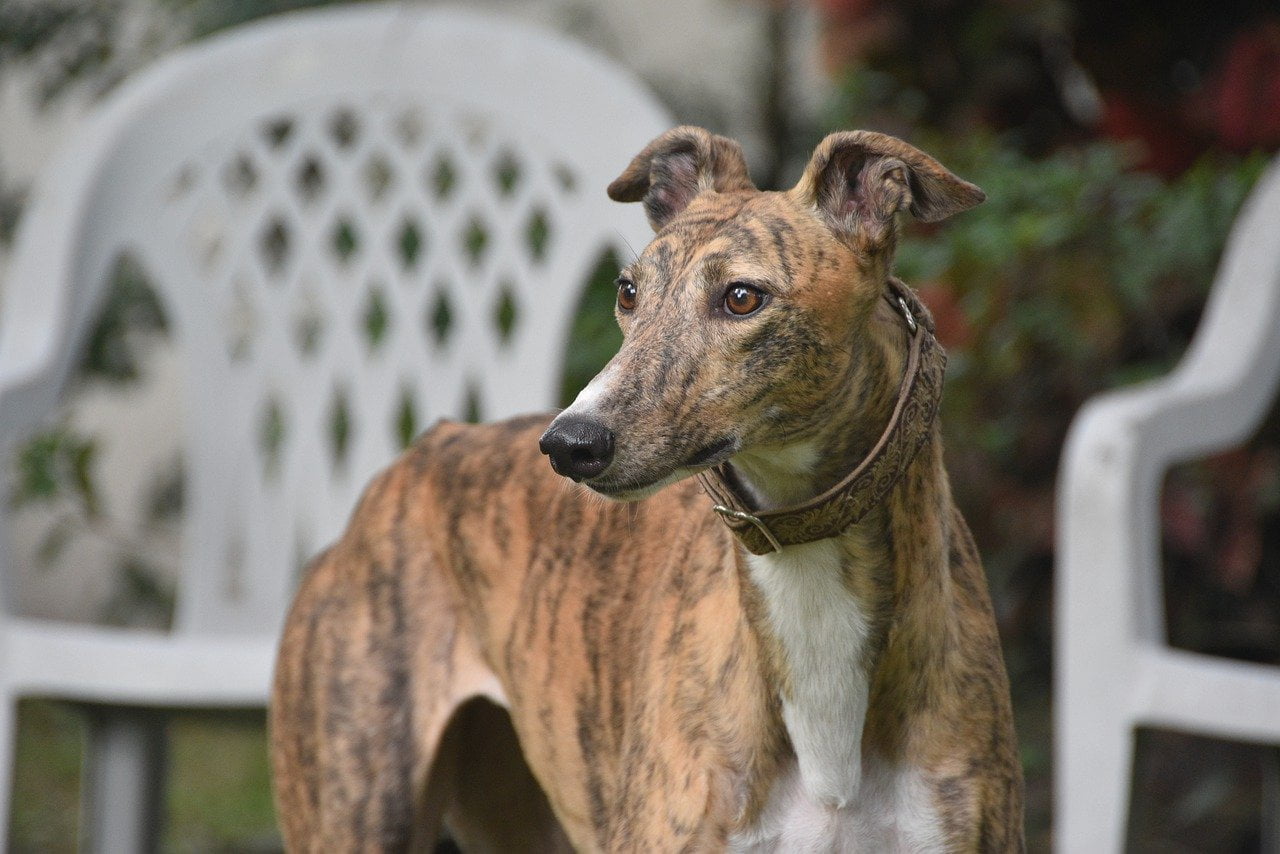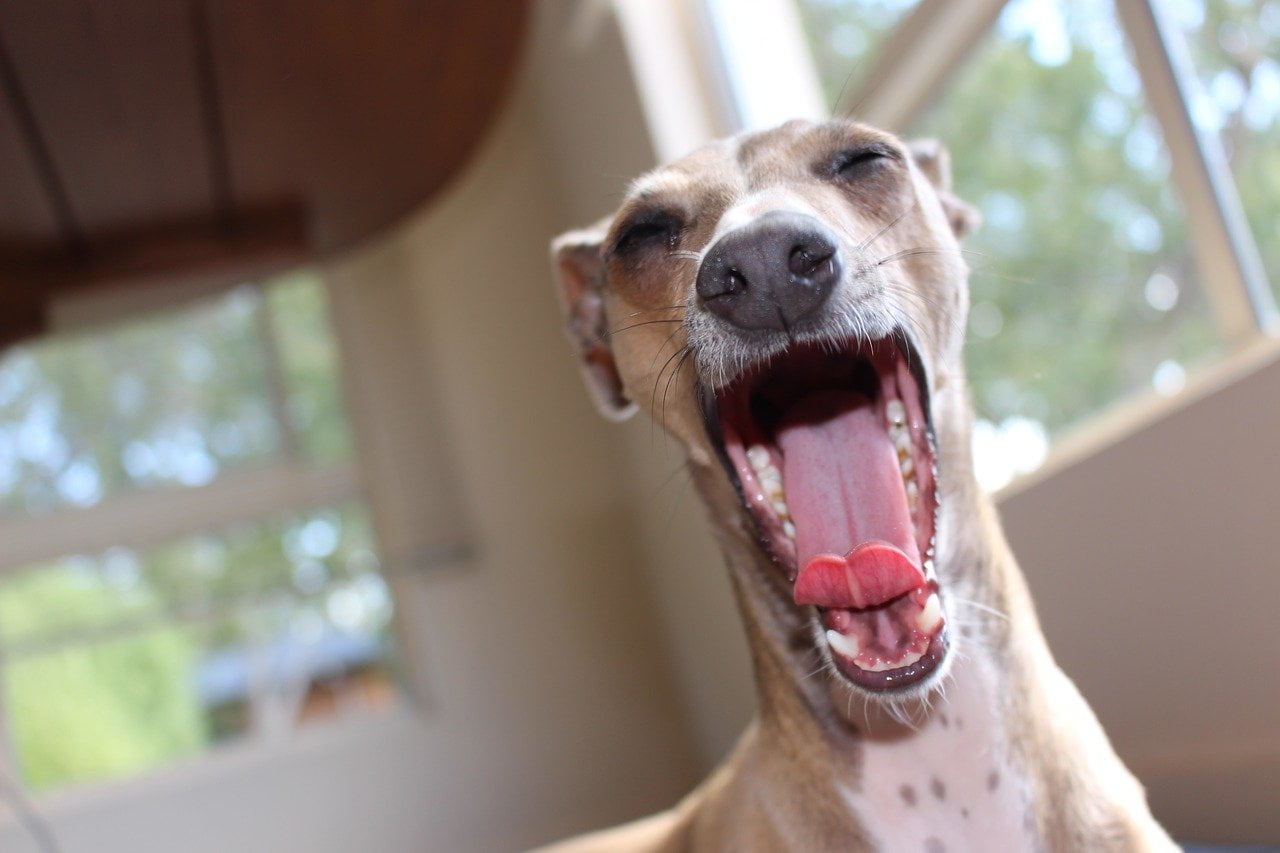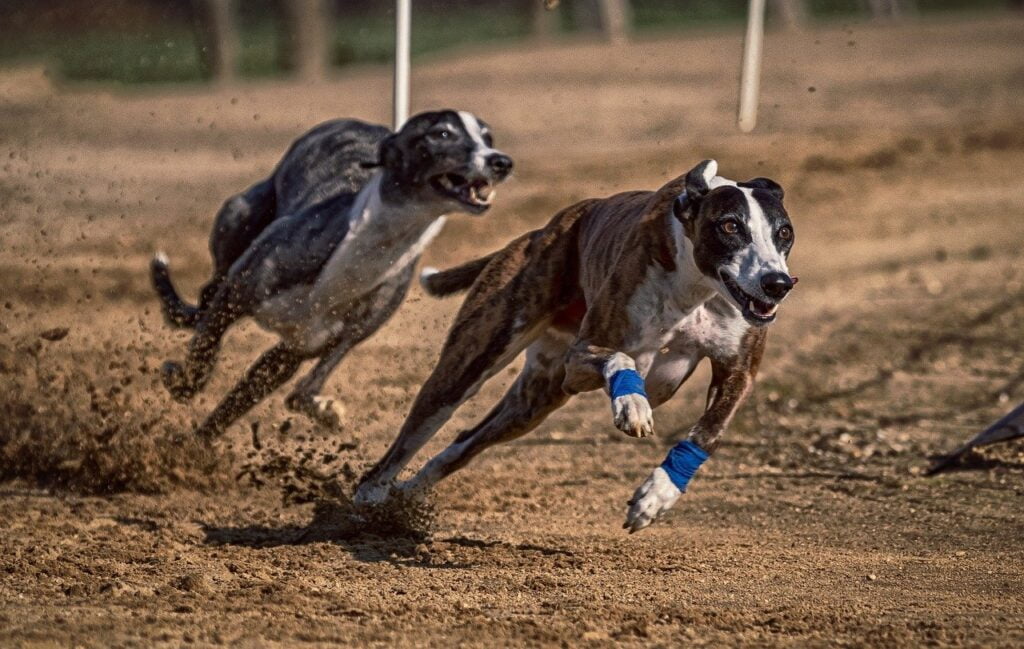
- Home
- Stud Dogs
Some of our most popular Stud Dog Breeds:
- Puppy Litters
- Dog Services
- Dog Breed Profiles
- Blog
- Contact Us
Greyhound Breed Profile
- Breed Profiles
- Greyhound
- Jun 07
- Share post

The Greyhound is known for being the fastest dog breed in the world. Having been bred for their streamlined bodies, they are able to run up to 45 miles per hour. Due to this, they are frequently used for dog racing, however, they usually retire between the ages of two and five, transitioning into a calmer, more peaceful lifestyle. Greyhounds are incredibly affectionate towards their family and have a very sweet nature. When they aren’t releasing their small bursts of energy, they’re usually spread out on the sofa.
Greyhounds are an excellent companion for families, as they get on well with children, despite their size. Their role in racing and hunting have led many to believe that they are an aggressive breed and a handful to care for, however, this is not the case. Many Greyhounds are surprisingly lazy after retirement, and do not require as much exercise as most people would assume.
A lot of attention is required to fulfil the Greyhound’s often needy personality – they love having their family around throughout the day and will gently pester you for plenty of cuddles.
Typical Greyhound Facts:
Height: 25-29 inches (63.5-74 cm)
Weight: 60 – 80 lbs (27-36 kg)
Average Litter Size: 8 puppies
Life Expectancy: 10-13 years
Kennel Club Classification: Hound
Good with Children: Yes
Colour of a Greyhound:
The Greyhound has a very short, dense coat. Colours include grey, white, black, red and fawn. Greyhounds can also often have a brindled pattern in various shades, or a particoloured coat, which is white with another colour.

Grooming a Greyhound:
Their short coat means grooming a Greyhound is very quick and easy. Short, daily brushes can help to prevent shedding, as well as keeping their coat glossy and neat. Bathe them when necessary or around twice a month, as dirt can show very easily on a lighter Greyhound.
Brushing their teeth around twice a week can also maintain their basic oral hygiene, as well as trimming their nails once a month to avoid any pain from splitting or overgrowth. Ensure to check their ears daily for any irritation or build-up of wax, and clean them regularly.
Greyhound Common Ailments/Health Issues:
Greyhounds are a generally healthy breed, however, due to their involvement in racing at such a young age and their rapid growth rate, they can be prone to some development issues. Hip dysplasia and bloat are two such issues, along with osteosarcoma, a form of bone cancer that prompts lameness as an early sign.
It is recommended to get your Greyhound puppy’s parents cleared by health professionals to eliminate any health conditions that could develop in later life. However, if regular veterinary check-ups are maintained and owners are aware of early symptoms, these health conditions can be caught early, and the chances of recovery are increased.
Temperament of the Greyhound:
Despite being are famous for their involvement in dog racing and occasionally hunting, Greyhounds are much softer and sweet-natured than most expect. They have a friendly temperament and love affection, although they can be timid and sensitive to strangers or disruptions in the household. Greyhounds have often been described as cat-like due to their intelligence and occasional laziness, which is unexpected from the fastest dog breed.

Training a Greyhound:
Greyhounds are easily trained due to their high intelligence levels; however, their timid nature does not bear well with firm or harsh techniques, so be patient and remember to praise and reward your Greyhound’s good behaviour and obedience with treats, attention and lots of affection.
It’s recommended to socialise your Greyhound with other dogs and strangers early on to build their confidence and to develop a friendly temperament. Puppy training can also be a good way to introduce this, as well as teaching your Greyhound basic rules and good household behaviour.
Exercise for a Greyhound:
Greyhounds are incredibly talented in their speed, however, they do not require as much exercise as many may think. A daily, brisk walk with additional playtime or roaming off-lead in a secure garden should be enough.
Make sure to give them a good amount of mental stimulation, as well as physical activities, as boredom can often lead to destructive habits.
History of the Greyhound:
The Greyhound is one of the oldest dog breeds in history, and it is believed to be over 4,000 years old. They are believed to have first originated in the Middle East and North Africa, while being mentioned by the Greeks and Romans in poetry, and they were also portrayed in art and tomb paintings by the Egyptians. The Egyptians considered Greyhounds to be god-like due to their noble appearance and their ancestors’ skills in hunting. They only allowed royalty to own them, and a Greyhound’s death would be mourned by the entire family. The Greyhound is also the only dog breed to be cited by name within the Bible, in Proverbs 30:29-31, King James Version.
There are many disputes over the origin of the Greyhound’s name. Some believe that it developed from their unusual coat colouring, whereas some argue that it came from the term “gazehound”, meaning “sight hound”, which refers to their ability to see nearly half a mile away.
The Greyhound’s incredible speed and sight made it a popular breed in hunting. Their skills were respected so much that nobles made it a capital violation to kill one of these hunting dogs.
When hunting declined in popularity, businessmen looked towards sporting events, and more specifically, dog racing and shows, with the Greyhound being among the earliest breeds in dog shows. These hounds were bred to put into sport arenas for agility, and, what started as friendly competition, soon developed into an expensive industry with the admiration of horse racing. The first official race that these dogs competed in took place in 1886. Dog racing is still extremely popular to this day; however, many argue that it should be banned due to the number of abandoned Greyhounds after their retirement from the sport and the damaging impact of gambling that it encourages.

Famous Greyhounds:
“Mick the Miller” is the most well-known, successful Greyhound racer, and he was the first Greyhound to win the Greyhound Derby more than once. He raced in England, winning 19 consecutive races before having to retire in 1931.
Greyhound Stud Dog Listings:
A dog owner since the early 80s, after convincing his parents to buy a Yorkshire terrier named Sadie, Darren created Dream Dogs so dog owners could find the best dog related information on the Internet.